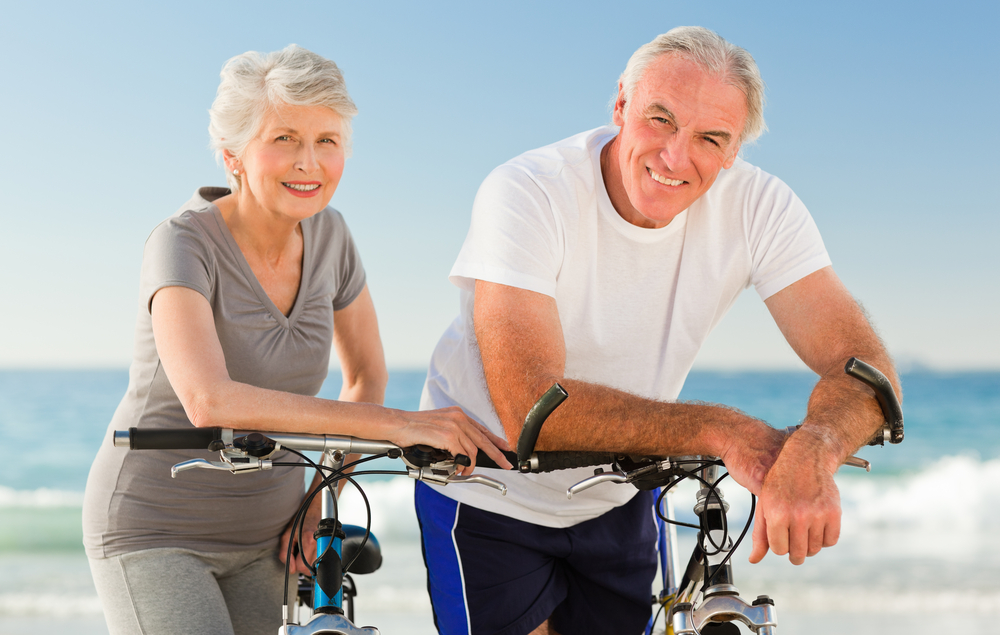It may be obvious to us all that exercise is good for you. Some really enjoy exercise and others, not so much. We can revel in the idea that once was (in our 20’s), that we were fit and strong then, and feeling capable or sporting. In the second half of life, the recollection of that can seem like a distant memory or even an idyllic time. The problem is, we have the very same body no matter our age. Its just a little wiser and a little worn. That’s OK!
What are the main challenges between exercising later in life vs in your youth?
Other than the psychological elements of this, here are a few real physical challenges:
- Acquired injuries and body wear – Identifying what your body is managing due to old injuries can be challenging. The most typical issues such as low back pain or neck pain can be indicative of soft tissue damage (from injuries, accidents) which manifests later in life as compensation in the bones, joints and muscles. This compensation, which our bodies are brilliant at, can become chronic and create osteoarthritis (OA), joint inflammation and tissue damage. This can be especially limiting for movement and daily activities. A single joint discomfort is far less an issue than multi joint discomfort. 1A study showed that people are 14x more likely to experience difficulty standing and walking than those without knee problems for instance. Appropriate physical prescription can assist and even eliminate the effects of OA and other injury related challenges.
- Diagnosed conditions and disorders – For some people, diagnosis of conditions or disorders later in life occurs. Autoimmune conditions such rheumatoid arthritis, lupus, MS, gluten intolerance (& Celiac) diagnosis are all on the rise and prevention/management of these is particularly important now. 2According to research those over 50 years have the greatest prevalence of autoimmune disorder onset with inflammatory bowel disease, MS and Celiac with the sharpest rise in prevalence in the overall population. Managing inflammation and working through it with prescribed movement (without increasing pain) is the key for success. If a person becomes stringer with better joint and organ health due to exercise, the overall disorder effects can be minimized and lead to a very health lifestyle.
- Changes in hormone balance – This varies between genders in terms of the actual hormones, their effect when reducing/changing, and the overall compensation in the body. We could spend many blogs on this topic alone! Let’s focus on the effects of exercise and hormones shifting with age. For one, consistent exercise (mainly good strength training) will improve biochemistry and metabolism. The key issue is recovery from exercise for both men and women. Managing it takes some expertise to know the dose and response amount for the exercise and how to increase intensity based on age and the hormone shifting. Secondly, never do the same the exercises as you did for fitness in your 20’s. These were not designed for the aging body, and will leave you diminished vs vital, in terms of biochemistry and metabolism. In fact, it has been noted that a considerable number of adults who exercise this way and hurt themselves and feel ‘age’ has got the best of them, thereby quitting altogether. Our endocrine system helps to maintain homeostasis (stable physiological functions). As such, exercise helps to maintain homeostasis. With hormones shifting with age this can be quite a task. That being said, the more consistent you are with the exercise the more the hormones are regulated and the overall negative effects are limited and the greater benefits occur. 3Such hormones as Cortisol (stress hormone) and Insulin (blood sugar) are highly positively affected with appropriate exercise. Inappropriate exercise would be too intense and can lead to a maladaptation and create the opposite effect. Movement and exercise perhaps make the biggest and most noticeable changes when it comes to working with hormones shifting. A note for males, the hormone testosterone changes gradually over age. There are ways to improve and get the most out of what you have through appropriate exercise. No, its not by doing the big lifts like in your 20’s. But you can increase muscle, strength and reduce body fat in your second half of life!
- Accelerated brain aging – 4Emerging evidence suggests that a sedentary and unhealthy lifestyles accelerate brain aging. Now this is not confined only to the second half of life! Regular physical activity, high cardiorespiratory fitness or both, can mitigate cognitive impairment and reduce dementia risks. Exercise generally has a neuroprotective effect through mechanisms such as improved cerebral blood flow, reduced inflammation and enhanced neuroplasticity. Over time, an increase in alertness, idea making, critical thinking, listening and memory can be noticed.

The really exciting part about exercise being this liberator of life and aging, is that it is naturally within all of us, and we do not have to take a pill or receive an injection to get the benefits.
The second half of life is an exciting time for improvement. Most of us can improve, and it only seems like its not possible because of the crazy comparisons to our own youth!
Seek professional help where able, and move forward. You can do it.👍😀
1 Arthritis Rheum. 2006 Oct 15; 55(5). Keenan, Tennant, Fear
2. Curr Opin Immunol. 2024 Feb1 'Increasing prevalence of autoimmunity and autoimmune disease' Miller F.
3 Prog Mol Biol Trans Sci 2015: 135:293-316 'Exercise and the regulation of endocrine hormones' Hackney A, Lane A.
4 The Lancet Vol 405, Issue 10484 P1093-1118 Mar 2025. 'Neurolprotective mechanisms of exercise and the importance of fitness for healthy brain aging' Tari A, Walker T.
